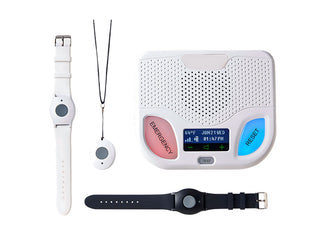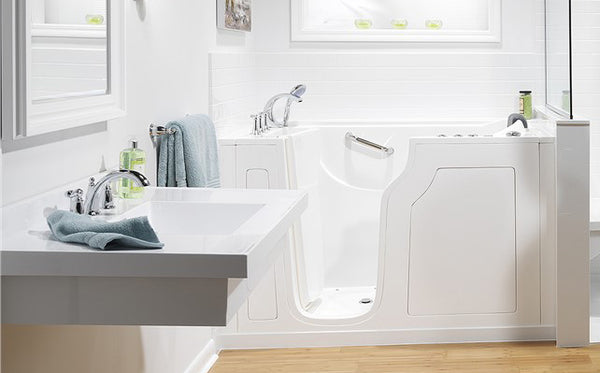Your Safety
What Seniors Should Know About Footwear and Falls

There are a few things seniors should know about footwear and falls.
- Falls are a serious concern. They’re a leading cause of injury and death among older adults, and they profoundly impact seniors’ independence and quality of life.
- While falls are common among older adults, they’re NOT inevitable. Things can be done to minimize the risk and prevent most falls.
- There are many reasons that older adults fall. Wearing the wrong footwear is a major contributor – one of the easiest to address.
How Does Footwear Contribute to Falling?
There are a number of ways that wearing the wrong footwear can contribute to falling.
Slips, Trips, and Stumbles: Because many seniors’ reflexes are slowed due to age or medical conditions, they can’t always regain their balance in time if they start to slip, trip or stumble.
- Bare feet – or stocking feet – dramatically increase the risk of slipping.
- Untied laces or thin, floppy shoes are easy to trip over.
- High heels and narrow soles don’t contact the ground enough to provide good traction.
- High heels contribute to ankle instability, which increases the risk of stumbling.
- Backless slippers have been linked to falls, hip fractures, and other fall-related injuries.
Painful Feet: Painful feet can alter the way older adults walk and affect their balance. It’s also hard to keep up an active lifestyle when walking hurts!
- Shoes that are too tight can lead to calluses, corns, or other painful conditions.
- Shoes without good, supportive padding won’t prevent discomfort in the joints.
Poorly Fitting Shoes: Shoes that don’t fit well can cause pain and affect balance.
- Feet naturally spread out when walking to enhance stability. Shoes that are too small prevent the feet from doing this, impairing balance.
- Shoes that are too large, loose, or floppy can allow the foot to slide, causing instability.
How to Find the Right Size Shoe
What is your shoe size? Are you sure? It might not be as straightforward as you think to find the right size shoe.
In fact, many studies show that nearly 3 in 4 adults over the age of 65 are wearing the wrong size shoe!
It’s important that seniors don’t rely on buying footwear based on what they think their size is. Each time an older adult shops for shoes, they should try them on to find the best fit.
Tips for Finding the Right Size:
- The Right Length: Allow for enough space to fit one thumb in between the end of the longest toe and the end of the shoe.
- A Little Wiggle Room: There should be enough room to wiggle the toes, but not so wide that the foot slips in the shoe.
- Find the Larger Foot: If the feet are different sizes, opt for shoes that fit the larger foot.
What to Look for in Footwear for Seniors
Aside from the right size, look for these important elements when shopping for shoes or slippers for seniors.
- Wide Base of Support: A shoe with a nice, wide outsole has good contact with the ground, which increases stability.
- Strong Grip: Outer soles should have a strong, textured rubber sole. Check them periodically for wear and be sure to replace them when the tread is worn!
- Sturdy Midsole: When soles are too flexible, it’s easy to twist a foot or ankle and fall. Look for a sturdy midsole for the best stability.
- Light Weight: Heavier shoes can be tiring or difficult to walk in and seniors sometimes drag or shuffle their feet as a result. Look for footwear that’s sturdy yet lightweight.
- Closed Back: It’s far too easy to stumble out of a shoe’s open heel. Additionally, a closed heel prevents the feet from sliding slightly in the shoes, which can cause problems with balance and stability.
- Flat or Low Heel: High-heeled shoes are bad for posture, balance, and ankle stability – they increase the risk of falling quite a bit! If heels must be worn, keep them under an inch in height.
- Snug Fit: Avoid shoes with a loose or floppy design, such as flip-flops or slip-on slippers. Be sure to discard any footwear that has grown stretched or worn out over time.
- Velcro Closure: It’s common for older feet to swell during the day. As they do, shoes with laces or velcro can be adjusted to ensure a good fit. Since slip-on shoes can’t be adjusted, they should generally be avoided by seniors. Laces can be harder to manage and are easy to trip over if they come untied, so velcro is usually the best bet.
Tips for Shoe Shopping
The American Podiatric Medical Association (APMA) recommends the 1-2-3 Test when it comes to selecting new shoes for older adults.
The 1-2-3 Test
- Press in on both sides of the shoe’s heel. The heel should feel stiff and hold its shape without collapsing inward.
- Bend the toes upward. The sole should be a little flexible but shouldn’t bend much.
- Twist the shoe to the left and right. The sole should keep its shape, and should not warp.
Other tips for shoe shopping include:
- Go shoe shopping in the afternoon, when feet tend to be at their largest. Feet can fluctuate in size as swelling comes and goes throughout the day.
- Don’t forget to bring anything you plan to wear in the shoe when you try them on, such as heavy socks, orthotic insoles, or a brace.
- Try shoes on both feet, and walk around a little in them. The right pair of shoes will feel comfortable from the start. There is no need to “break them in”.
- Older adults should have their feet measured each time they shop for shoes. If it’s not possible, trace the outline of both feet onto paper and measure that.
- The APMA grants its Seal of Acceptance to shoes that they’ve recognized as being beneficial for foot health. Not every appropriate shoe will bear this mark, but when you find one you know it’s been tested and recognized as being beneficial for good foot health.
The Right Footwear: Part of an Overall Fall Protection Plan
Finding and wearing the right footwear is an important part of fall safety – but it’s not the only thing that contributes to falls in older adults. For example, other factors that contribute to falls in the elderly include:
- Safety hazards around the home
- Various medical conditions
- Medication use or side effects
- Changes in vision
- Muscle weakness
A good fall prevention plan will address all of these factors and include a range of approaches for minimizing the risk.
- Run through a fall prevention checklist
- Ask the doctor about medical conditions that may contribute to fall risk
- Request a comprehensive medication review from the pharmacist
- Schedule a vision check-up
- Encourage an active lifestyle
Surprisingly, another big risk factor for falling is the fear of falling itself. Seniors who are afraid to fall are actually more likely to fall, perhaps due to anxiety, stiffness, and distracted attention.
Encouraging an active lifestyle and providing supports that help an older adult feel more secure, such as a Medical Alert System, can reduce the fear of falling in some seniors.
Take the First Step Towards a Fall-Free Future
Wearing the wrong size or type of footwear is incredibly common among older adults, and it is a major risk factor for falling. Fortunately, it’s easy enough to remedy once you know what to look for. Getting properly fitted for a good pair of shoes is a great first step to reducing fall risk.
Sources
- Balance-Boosting Footwear Tips for Older People | Tips for Healthy Feet | Patients | APMA
- Footwear | Staying On Your Feet – Taking Steps to Prevent Falls | Winnipeg Regional Health Authority
- Proper Footwear Can Help Prevent Falls
- Foot Problems | Aging & Health AZ | American Geriatrics Society
- Care & Treatment of Common Foot Problems
- Lifestyle and Management options for Foot Problems | American Geriatrics Society
- Shoe design for older adults: Evidence from a systematic review on the elements of optimal footwear







